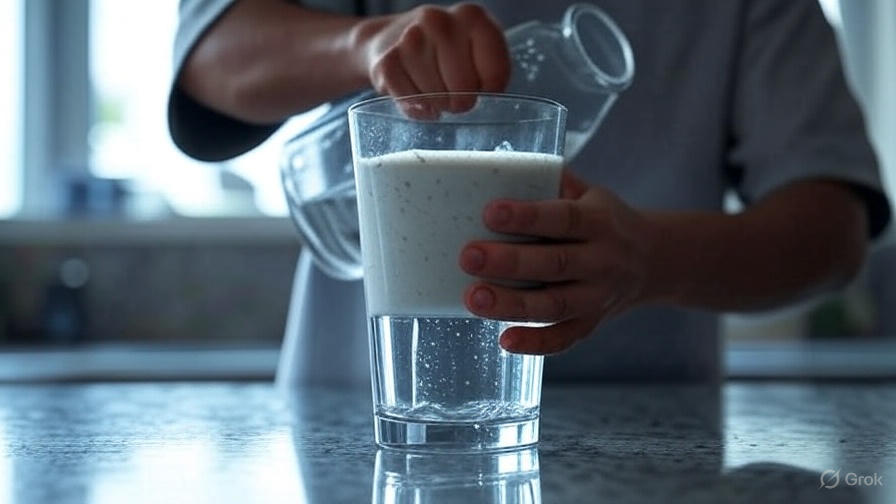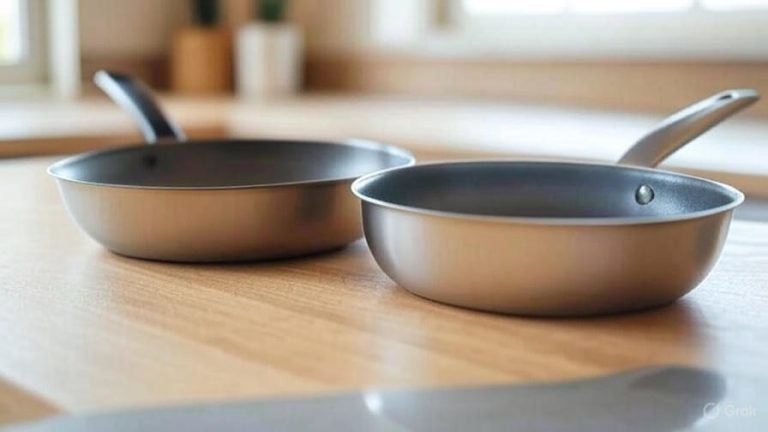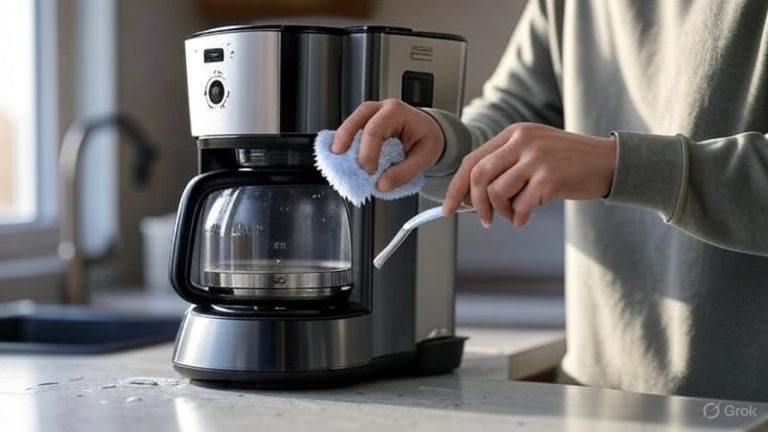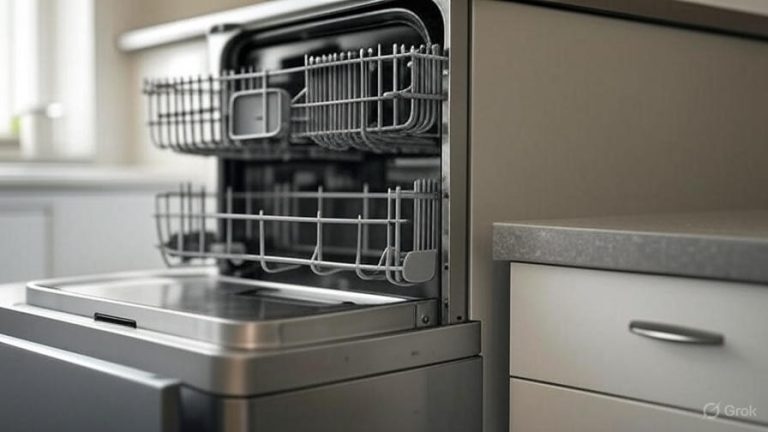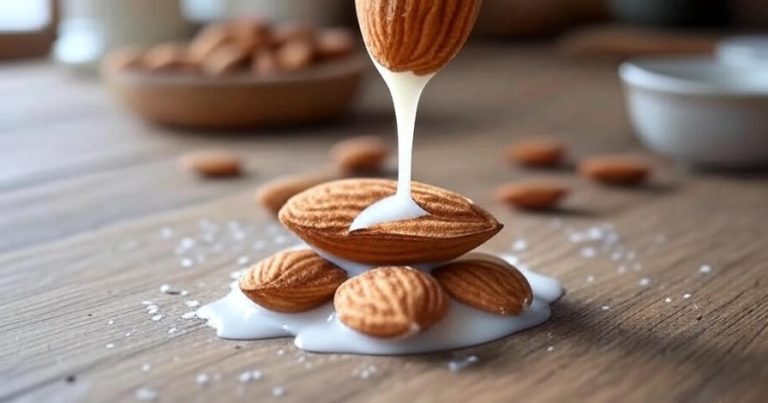How to Rehydrate Dry Shake?
Protein shakes have become a staple in fitness routines and healthy eating plans worldwide. However, nothing frustrates fitness enthusiasts more than opening their protein powder container to find a rock-hard, clumpy mess instead of the smooth powder they expected. This common problem affects millions of people who invest in quality protein supplements only to watch them turn into unusable chunks.
Dry protein shake powder transforms into stubborn clumps due to moisture exposure, temperature changes, and improper storage conditions. The good news is that you can rescue your expensive protein powder and restore it to its original consistency. This comprehensive guide will walk you through proven methods to rehydrate dry shake powder, prevent future clumping, and maximize your supplement investment.
Why Protein Powder Becomes Dry and Clumpy
Hygroscopic properties make protein powder naturally attract moisture from the surrounding environment. When protein molecules absorb water vapor from the air, they begin to stick together and form clusters. These clusters gradually grow larger until they create the hard, cement-like blocks that plague many fitness enthusiasts.
Temperature fluctuations accelerate this process significantly. Hot summer days followed by cool nights create condensation inside containers, while storing protein powder in humid environments like bathrooms or kitchens compounds the problem. Even tiny amounts of moisture from wet scoops or hands can trigger widespread clumping throughout the entire container.
Manufacturing processes also play a crucial role in powder stability. Some brands use anti-caking agents and moisture barriers more effectively than others. Budget protein powders often lack these protective measures, making them more susceptible to moisture damage and clumping issues.
The type of protein affects clumping tendencies as well. Whey protein isolate tends to be more stable than whey concentrate, while plant-based proteins like pea and hemp protein often clump more readily due to their natural fiber content and processing methods.
Essential Tools for Rehydrating Protein Powder
Before attempting to rehydrate your clumpy protein shake, gather the right equipment to ensure success. A food processor or high-powered blender serves as your primary weapon against stubborn protein clumps. These appliances provide the mechanical force needed to break apart hardened chunks and restore powder consistency.
Fine-mesh sieves help separate rehydrated powder from remaining clumps, allowing you to identify areas that need additional processing. Multiple sieve sizes work best, starting with larger openings and progressing to finer mesh for optimal results.
Airtight storage containers with moisture-absorbing packets become essential for preventing future clumping incidents. Glass jars with tight-fitting lids work exceptionally well, as do specialized protein powder containers with built-in scoops and sealing mechanisms.
Measuring tools help you track moisture levels and rehydration progress. Kitchen scales provide precise measurements, while measuring cups and spoons ensure consistent ratios when adding liquid during the rehydration process.
The Mechanical Breaking Method
Start your rehydration journey with the mechanical breaking method, which proves most effective for moderately clumped protein powder. Remove large chunks from the container and place them on a clean cutting board. Use the back of a large spoon or a rolling pin to gently crush the clumps into smaller pieces.
Work systematically through each clump, applying steady pressure rather than aggressive force. Aggressive crushing can damage the protein structure and create more dust than usable powder. Break clumps down to roughly pea-sized pieces before moving to the next step.
Transfer the broken pieces to a food processor fitted with a standard chopping blade. Pulse the processor in short bursts, checking progress every 10-15 seconds. Long continuous processing generates heat that can damage protein quality and create an unpleasant taste.
Process until the mixture reaches a coarse powder consistency, then pass it through a fine-mesh sieve. Larger pieces that don’t pass through the sieve need additional processing, while the sifted powder can move to storage containers.
This method works particularly well for whey protein concentrates and casein powders that haven’t been exposed to excessive moisture. Success rates typically exceed 80% when performed correctly on moderately clumped supplements.
Steam Rehydration Technique
Steam rehydration offers a gentler approach for delicate protein powders or severely hardened clumps that resist mechanical breaking. This method uses controlled moisture application to soften clumps without oversaturating the powder.
Set up a double boiler arrangement using a large pot filled with two inches of water and a heat-proof bowl that fits snugly on top. Bring the water to a gentle simmer, creating steady steam without violent bubbling.
Place hardened protein clumps in the heat-proof bowl, spreading them in a single layer for even steam exposure. Cover the bowl with a clean kitchen towel to trap steam while allowing excess moisture to escape.
Steam the clumps for 3-5 minutes, checking progress every minute. The goal is to soften the exterior without creating a soggy mess. Properly steamed clumps will yield to gentle pressure from a fork or spoon.
Remove the bowl from heat and allow clumps to cool for 2-3 minutes before breaking them apart manually. The softened exterior should crumble easily, revealing the preserved powder inside each clump.
This technique works exceptionally well for plant-based proteins and collagen powders that become extremely hard when exposed to moisture. The gentle heat and controlled humidity restore powder consistency without compromising nutritional value.
Liquid Incorporation Method
Sometimes the best approach involves embracing the clumps and incorporating them directly into your shake preparation. This method saves time while ensuring you don’t waste valuable protein powder.
Start with room temperature liquid rather than cold liquid, as warmer temperatures help dissolve stubborn clumps more effectively. Water, milk, or plant-based alternatives all work well, though milk proteins can help mask any texture irregularities from the rehydration process.
Add liquid gradually to clumpy protein powder, starting with just enough to wet the surface. Allow the mixture to sit for 2-3 minutes, giving the powder time to absorb moisture and begin softening.
Use a fork or whisk to break apart softened clumps, working from the outside edges toward the center. The combination of moisture and mechanical action gradually dissolves even stubborn chunks.
Blend the mixture using an immersion blender or transfer to a regular blender for final processing. High-speed blending eliminates any remaining texture issues and creates a smooth, drinkable shake.
This method proves particularly effective for morning routines when time constraints prevent elaborate rehydration procedures. The final product tastes identical to shakes made with fresh powder, making it an excellent practical solution.
Heat Application Strategies
Controlled heat application can restore severely clumped protein powder when other methods fail. This approach requires careful temperature management to avoid denaturing the protein or creating unpleasant flavors.
Preheat your oven to its lowest setting, typically around 170-200°F. Higher temperatures risk damaging protein structure and creating a bitter taste that ruins the supplement’s palatability.
Spread clumped protein powder on a large baking sheet lined with parchment paper. Break larger clumps into smaller pieces first to ensure even heat distribution and prevent scorching.
Place the baking sheet in the preheated oven for 10-15 minutes, checking every 5 minutes for progress. The powder should feel dry and crumbly when properly heated, not crispy or brown.
Remove the baking sheet and allow the powder to cool completely before handling. Hot powder can burn your hands and may continue cooking even after removal from the oven.
Process the cooled powder through a food processor or sieve to achieve uniform consistency. This final step eliminates any remaining clumps and restores the smooth texture expected from quality protein powder.
Heat application works best for whey-based proteins and works less effectively with heat-sensitive supplements like probiotics or enzymes. Always check product labels for temperature restrictions before using this method.
Preventing Future Clumping Issues
Prevention beats remediation when dealing with protein powder clumping problems. Proper storage techniques eliminate most moisture-related issues and extend supplement shelf life significantly.
Store protein powder in cool, dry locations away from temperature fluctuations. Pantries and closets work better than kitchens or bathrooms, where humidity levels change frequently throughout the day.
Invest in high-quality airtight containers with rubber gasket seals. Original manufacturer containers often lack adequate moisture barriers, especially after the initial seal breaks.
Add food-grade desiccant packets to storage containers to absorb excess moisture. Silica gel packets from vitamin bottles work well, or purchase dedicated moisture absorbers from kitchen supply stores.
Keep scoops completely dry before inserting them into powder containers. Even small amounts of moisture from washing or humid air can trigger widespread clumping throughout the entire container.
Consider dividing large containers into smaller portions stored separately. This strategy limits damage when moisture exposure occurs and makes the remaining powder easier to manage.
Storage Solutions That Work
Effective storage begins with container selection and environmental control. Glass mason jars with metal lids provide excellent moisture barriers while allowing easy visual inspection of powder condition.
Vacuum-sealed bags offer superior moisture protection for long-term storage. Remove as much air as possible before sealing, and store sealed bags inside secondary containers for additional protection.
Freezer storage works well for protein powders you won’t use immediately. Double-bag the powder and allow it to reach room temperature before opening to prevent condensation formation.
Create a rotation system for multiple containers, using older powder first to prevent extended storage periods. Label containers with purchase dates and opening dates to track freshness accurately.
Monitor storage area humidity levels using a simple hygrometer. Ideal humidity stays below 50% for optimal protein powder preservation, with lower levels being even better.
Signs Your Protein Powder Needs Attention
Early intervention prevents minor clumping from becoming major problems. Regular inspection helps identify issues before they require extensive rehydration procedures.
Visual inspection reveals early clumping signs, including small clusters forming around the container edges or visible moisture droplets on the inner surfaces. Address these issues immediately before they spread.
Texture changes indicate developing problems even when clumps aren’t visible. Fresh protein powder flows freely and feels fine between your fingers, while problem powder feels sticky or gritty.
Odor changes signal potential spoilage or excessive moisture exposure. Fresh protein powder has a mild, pleasant smell, while problematic powder may develop musty or sour odors.
Mixing difficulties suggest clumping issues even when the powder appears normal. If your regular mixing routine produces lumpy shakes, investigate storage conditions and powder quality.
Color changes, particularly darkening or discoloration, indicate moisture damage or potential spoilage. These changes often accompany texture and odor problems, requiring immediate attention.

Troubleshooting Common Problems
Different protein types require different rehydration approaches. Plant-based proteins often need gentler handling due to their fiber content, while whey proteins typically withstand more aggressive processing.
Overly wet rehydration creates new problems by turning powder into paste. If this happens, add small amounts of fresh powder to absorb excess moisture, or use the heat application method to remove water.
Bitter or off flavors after rehydration usually indicate heat damage or spoilage. These powders may not be safe to consume and should be discarded rather than consumed.
Persistent clumping despite rehydration efforts suggests storage problems that need addressing. Check containers for damage, evaluate storage locations, and consider environmental factors affecting powder quality.
Processing equipment struggles with extremely hard clumps may require soaking in small amounts of liquid before mechanical processing. This softens the exterior enough for blenders or food processors to handle effectively.
Quality Assessment After Rehydration
Properly rehydrated protein powder should closely match fresh powder in appearance, texture, and mixing characteristics. Visual inspection provides the first quality indicator, with successful rehydration producing uniform, fine powder without visible clumps.
Texture testing involves running powder through your fingers and assessing flow characteristics. Quality rehydrated powder flows smoothly and feels fine, similar to flour or powdered sugar consistency.
Mixing tests provide the ultimate quality assessment. Prepare a shake using your normal liquid ratios and mixing methods. Successful rehydration produces smooth shakes without lumps or unusual textures.
Taste evaluation ensures the rehydration process hasn’t compromised flavor quality. Off tastes, bitterness, or unusual odors indicate potential problems that may affect safety or palatability.
Nutritional integrity remains intact when rehydration methods avoid excessive heat or chemical treatments. The protein content and bioavailability should match original specifications when proper techniques are used.
Cost-Effective Solutions
Rehydrating clumpy protein powder saves significant money compared to replacing expensive supplements. Quality protein powders often cost $30-60 per container, making rehydration techniques valuable money-saving skills.
Time investment for rehydration typically ranges from 15-30 minutes depending on clump severity and chosen method. This compares favorably to the time required to research, purchase, and receive replacement powder.
Equipment costs remain minimal since most rehydration tools are common kitchen items. Food processors, blenders, and basic storage containers serve multiple purposes beyond protein powder maintenance.
Prevention strategies offer the best return on investment, requiring minimal upfront costs for storage containers and desiccant packets while preventing expensive powder loss.
Professional-grade storage solutions may cost more initially but pay for themselves through extended powder life and reduced waste. Consider these investments for serious supplement users.
Health and Safety Considerations
Food safety remains paramount when rehydrating protein powder. Inspect powder carefully for signs of mold, unusual odors, or discoloration that might indicate spoilage rather than simple clumping.
Temperature control during rehydration prevents protein denaturation and preserves nutritional value. Excessive heat damages amino acid structures and reduces supplement effectiveness.
Cleanliness throughout the rehydration process prevents contamination and ensures safe consumption. Wash all tools and containers thoroughly before use, and work in clean environments.
Expiration dates still apply to rehydrated powder. Clumping doesn’t extend shelf life, and expired powder should be discarded regardless of texture improvements.
Personal allergies and sensitivities may be affected by rehydration processes, particularly when using steam or heat methods. Consult healthcare providers if you have concerns about modified preparation methods.
Conclusion
Clumpy protein powder doesn’t have to mean wasted money or ruined fitness routines. The methods outlined in this guide provide practical solutions for nearly every clumping situation, from light clustering to cement-hard blocks that seem impossible to salvage.
Success with protein powder rehydration comes from matching the right technique to your specific situation. Mechanical breaking works well for moderate clumping, while steam rehydration handles delicate powders effectively. Heat application tackles severe cases, and liquid incorporation offers quick daily solutions.
Prevention remains the best strategy for avoiding clumping problems entirely. Proper storage, moisture control, and environmental management eliminate most issues before they develop into major problems requiring extensive rehydration efforts.
The investment in proper rehydration techniques and prevention strategies pays dividends through reduced waste, consistent shake quality, and maximized supplement value. These skills serve any serious fitness enthusiast or health-conscious individual who relies on protein supplementation for nutritional goals.
Master these techniques and you’ll never again face the frustration of unusable protein powder. Your wallet, your workout routine, and your nutritional goals will all benefit from this practical knowledge that transforms protein powder problems into manageable maintenance tasks.

